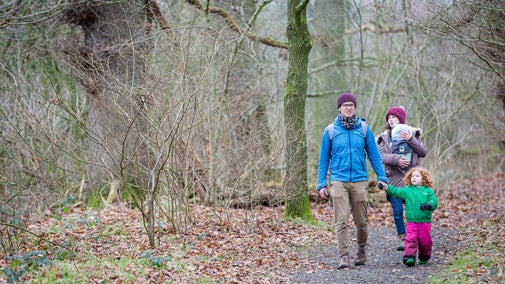
Discover more at Acorn Bank
Find out when Acorn Bank is open, how to get here, the things to see and do and more.

Explore Acorn Bank's long history, which dates back to the 13th century. Find out how the purpose of this special place has changed throughout the centuries and how it came into the National Trust’s care.
The first owners were the Knights Templar in 1228, from whom the nearby village of Temple Sowerby got its name. After the suppression of the Templars, the manor passed to the Knights of the Hospital of St John, who held it from 1323 until the Dissolution of the Monasteries by Henry VIII.
In 1543 Acorn Bank was acquired by Thomas Dalston, a local landowner from Dalston, just outside Carlisle, and remained in the hands of his descendants right up until the 1930s.
During the late 18th and early 19th centuries it passed through the female line three times, eventually passing to the Boazman family from Newton Aycliffe in County Durham.
The Boazmans started to mine gypsum at Acorn Bank from the 1880s onwards. It was not their main residence and so had little investment, which means that very few Victorian alterations were made to the house.
Parts of the house date from the 16th century, but the main block was rebuilt in the mid-17th century. They then gave the whole house a new façade in the 1690s and added Georgian sash windows in the 1740s.

Acorn Bank, with its 180 acres of park and woodland, was given to the National Trust in 1950 by Dorothy Una Ratcliffe, the Yorkshire writer, traveller and art collector who had bought the property in 1934 with her second husband Captain Noel McGrigor Phillips.
Dorothy lived on at Acorn Bank with her third husband for a few years until she relocated to Scotland. Her impressive collections of paintings, sculptures, glass and fans were bequeathed to the City of Leeds on her death in 1967.
The house was leased to tenants for the next 40 years; the last tenants were the Sue Ryder Foundation, who used it as a nursing home. Acorn Bank opened the garden to the public, and during the 1990s they began to open up the estate walks and started the restoration of the watermill.

When the Sue Ryder Foundation closed the home in 1996, the National Trust took on the direct management of the building. After initial extensive repairs and restoration, holiday apartments were established within the house to provide much-needed income and a tea-room was opened in one wing in 2000.
In 2012, the team at Acorn Bank set out to bring the house back to life. They moved the shop and visitor reception into the house and allowed regular visitor access to empty ground-floor rooms for the first time.
Biomass central heating replaced the ancient and inefficient oil-fired boilers in June 2013 and the team is now exploring ideas for future uses of the house, whilst addressing its conservation needs in the shorter term.

Find out when Acorn Bank is open, how to get here, the things to see and do and more.
Potter around the fascinating garden at Acorn Bank. The garden boasts over 275 varieties of herbs as well as hot beds, vegetable patches and traditional fruit orchards.

Explore the 180 acres of woodland and parkland at Acorn Bank to visit the historic watermill, get closer to nature, or go on a geocaching adventure.

Discover what family-friendly activities are on offer at Acorn Bank in Cumbria, from geocaching around the parkland to newt spotting in the Sunken Garden. Try a self-guided nature trail and use rubbing plaques to discover the flora and fauna of Acorn Bank's walled garden and woodland.

Learn about people from the past, discover remarkable works of art and brush up on your knowledge of architecture and gardens.
